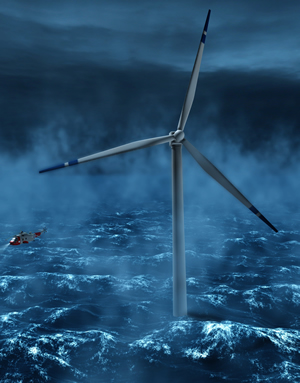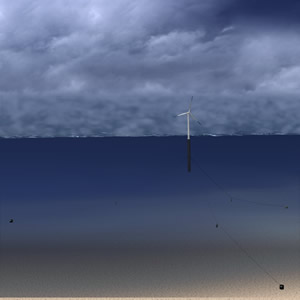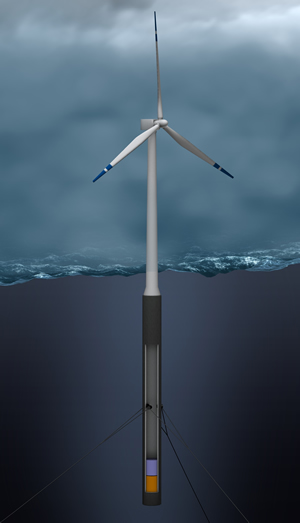Nov 4 2005
Hydro has developed a new concept for producing power at sea Hywind. Floating concrete construction technology developed for the North Sea oil industry will be applied to offshore windmills.
Model testing is currently under way at Norwegian R&D institute Sintef Marintek’s ocean basin laboratory in Trondheim.
“Hywind is a future-oriented project combining our offshore oil industry experiences with our knowledge of wind power to take advantage of wind resources where it blows most – at sea. If we succeed, this can become an important part of our future energy supply,” says Hydro’s director of new energy forms, Alexandra Bech Gjørv.
Hydro is using the ocean basin in Trondheim to simulate wind and wave conditions at sea. A model of the floating windmill has been tested and the results are promising.
We are now evaluating the placement of a windmill in the North Sea to demonstrate that it is possible to build offshore wind parks at sea depths of 200-300 meters.
Hydro has measured wind speeds in the North Sea for more than 30 years. Based on data determining that average wind speeds at sea are higher than on land, Hywind will be exceptionally energy efficient.
Bech Gjørv emphasizes that Hywind will be a supplement, not a substitute to land-based wind parks.
“Hywind is very well-suited for energy poor areas where there is little accessible land, but good offshore wind conditions, for example in the US, Japan and in the vicinity of offshore installations,” she says.
A demonstration project is currently being planned based on wind turbines with a power generation capacity of 3 megawatt (MW). The windmills will reach 80 meters above the sea’s surface and will have a rotor diameter of about 90 meters.
According to plans, the demonstration project will start operating in 2007. We eventually envision wind turbines with a power capacity of 5 MW and a rotor diameter of approximately 120 meters.
“The future goal is to have large-scale offshore wind parks with up to 200 turbines capable of producing up to 4 terawatt hours (TWh) per year and delivering renewable electricity to both offshore and onshore activities. This goal is far in the future, but if we’re to succeed in 10-15 years, we have to start the work today,” Bech Gjørv says.
Four TWh is comparable to the power consumption of some 200,000 average Norwegian households.
Hydro has invested some NOK 20 million into developing the Hywind concept over the past three years. Further realization of research and the demonstration project will require at least another NOK 150 million.



http://www.hydro.com